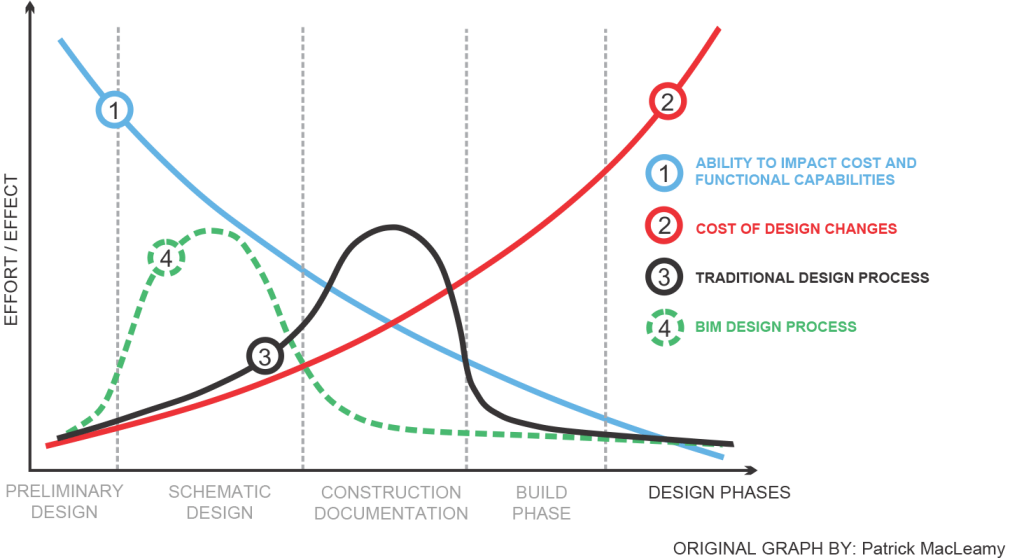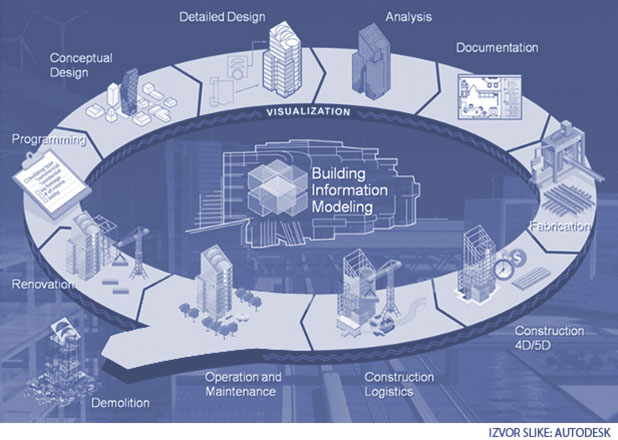ADVANTAGES OF BIM TECHNOLOGIES IN ARCHITECTURE AND CIVIL ENGINEERING
BIM (Building information modeling) technologies have been developing for more than 10 years, but last years usage increases. For the past couple of years, architecture and construction market increasingly insist on the use of BIM technology to increase efficiency and control errors. Using a BIM software has made better and faster control over the design process as well as in collaboration among the participants.
The BIM technology should not bee seen only as a more visual approach to architecture, compared to the presentations we have managed to achieve with the traditional method of the design process, but as the database from which we can obtain any information that we is needed.
Generally speaking, the BIM designing method actually creates a database in which we have all dimensions of the element, the quantity of material or any other parameter of the elements (price, manufacturer, color …) available to all project participants in a digital format, for all involved professionals, equipment manufacturers, investors, etc.
MONEY AND TIME SAVINGS
As you can see on the chart, how the design process progresses, the cost of changes increases, and the ability to influence the design process decreases.
As the engagement of the BIM design process experiences the climax of earlier design phases compared to the traditional design, you can conclude that the cost of designing is decreasing.
At the stage of making the execution documents, in which is engaged the most resources in the traditional design process, the BIM design process, because all the elements in the model already exists, hires resources only to compile them in some form of graphic presentation.
The possibility of discrepancy between parts of the project is excluded.
KEY BENEFITS OF BIM AGAINST TO CAD DESIGN:
- High degree of visualization
- Better cooperation between the participants in the design process
- Control of errors and collisions.
- The entire project is a single file.
- Standardization of documentation.
- The quick changes ability causes cost savings
- All information about the building

